The diversity of art always surprises and delights me, especially when I can see works by different artists in a single room. It is particularly appealing to those who get bored easily.
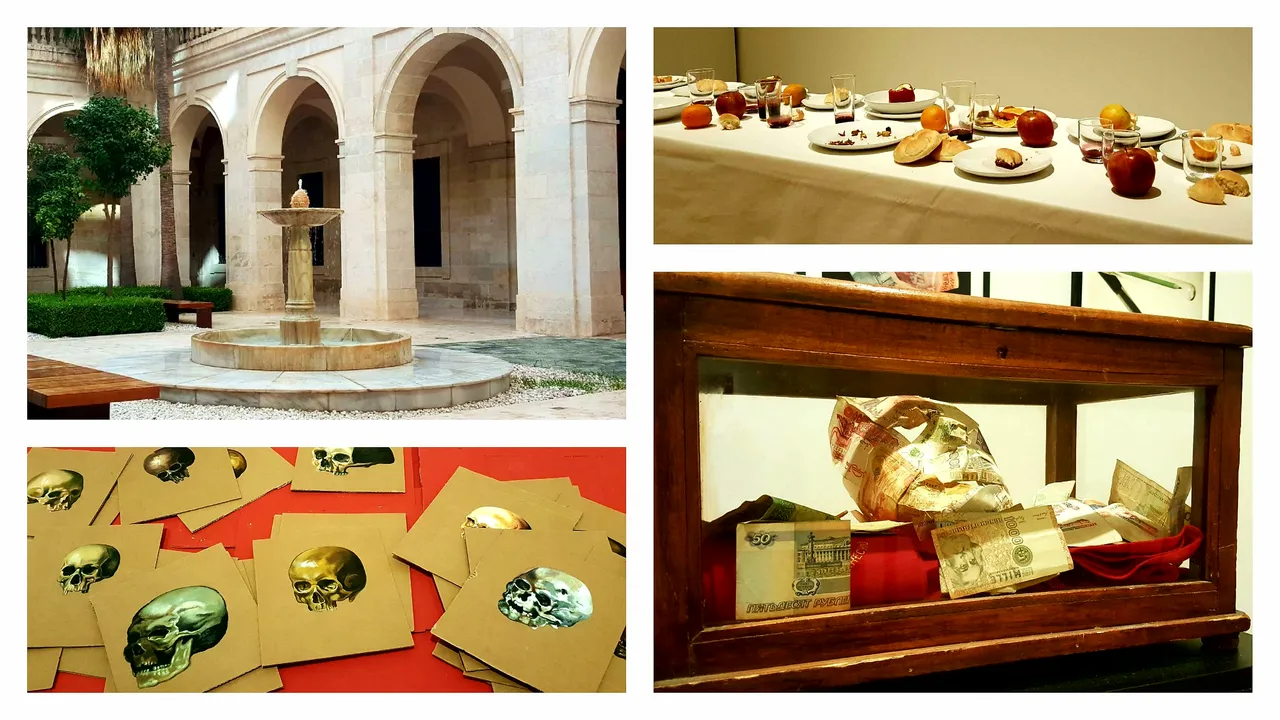
An art exhibition I recently attended consisted of so many rooms and works of art of different kinds that it is difficult to group them by theme. In a previous post, I talked about some of them, and now I'm bringing you another of the rooms I visited where the art content was totally different and innovative.
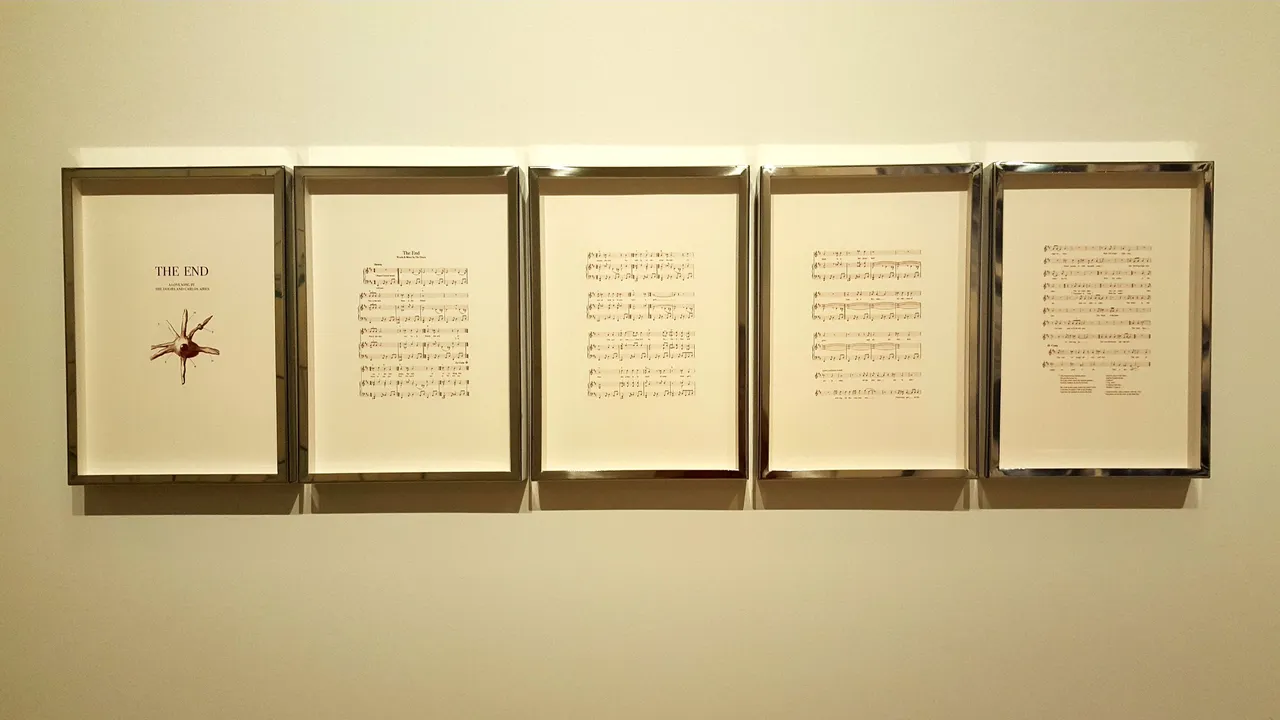

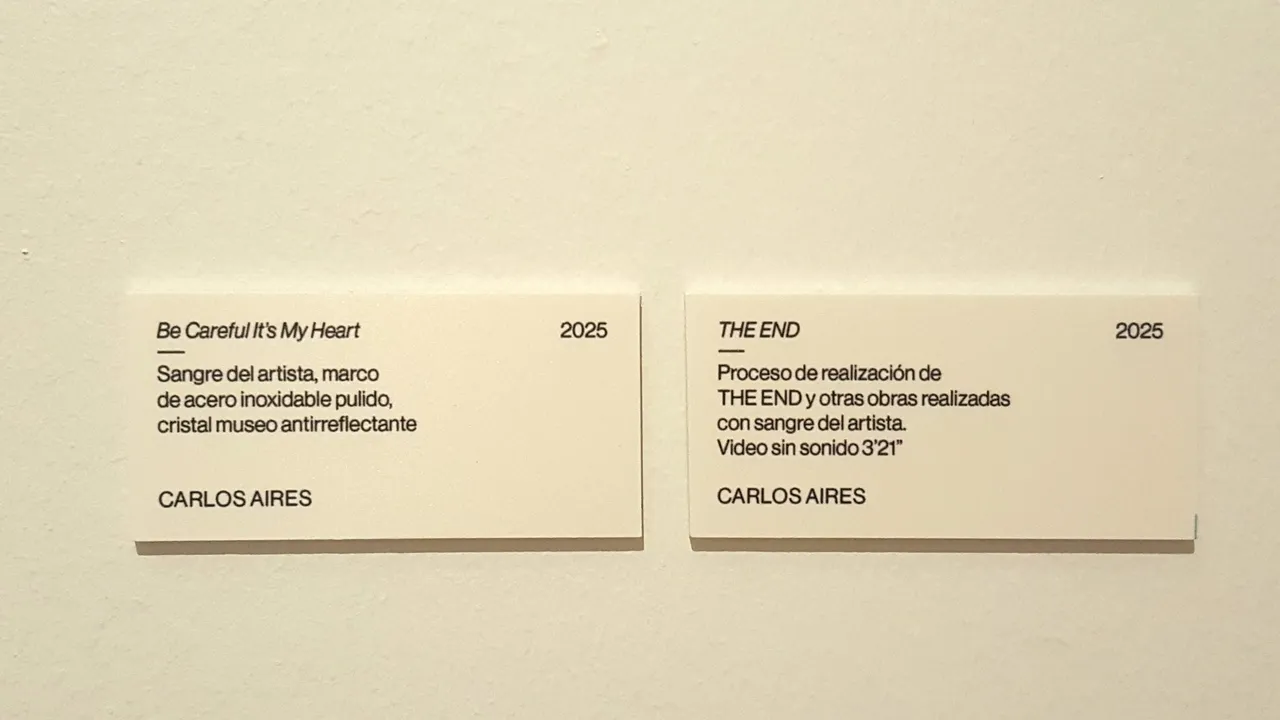
At first, I saw two works by the same artist, Carlos Aires, on the same wall, which were made with his blood. I found that absolutely strange and surprising, but anything is possible in the art world.
One work appeared to be sheet music. I don't know anything about music, so I didn't really understand it or whether it actually made any sense, but it was well displayed. The work is called “The End,” and next to it was a small screen with a video without sound. The signs emphasized that the works were made with the artist's blood.
The other work is titled “Be Careful It's My Heart” and is made with the artist's blood, a polished stainless steel frame, and anti-reflective museum glass. Although the work was very high up, if it had been at my height, I wouldn't have had to struggle with the reflection to take the photograph, or so I think.
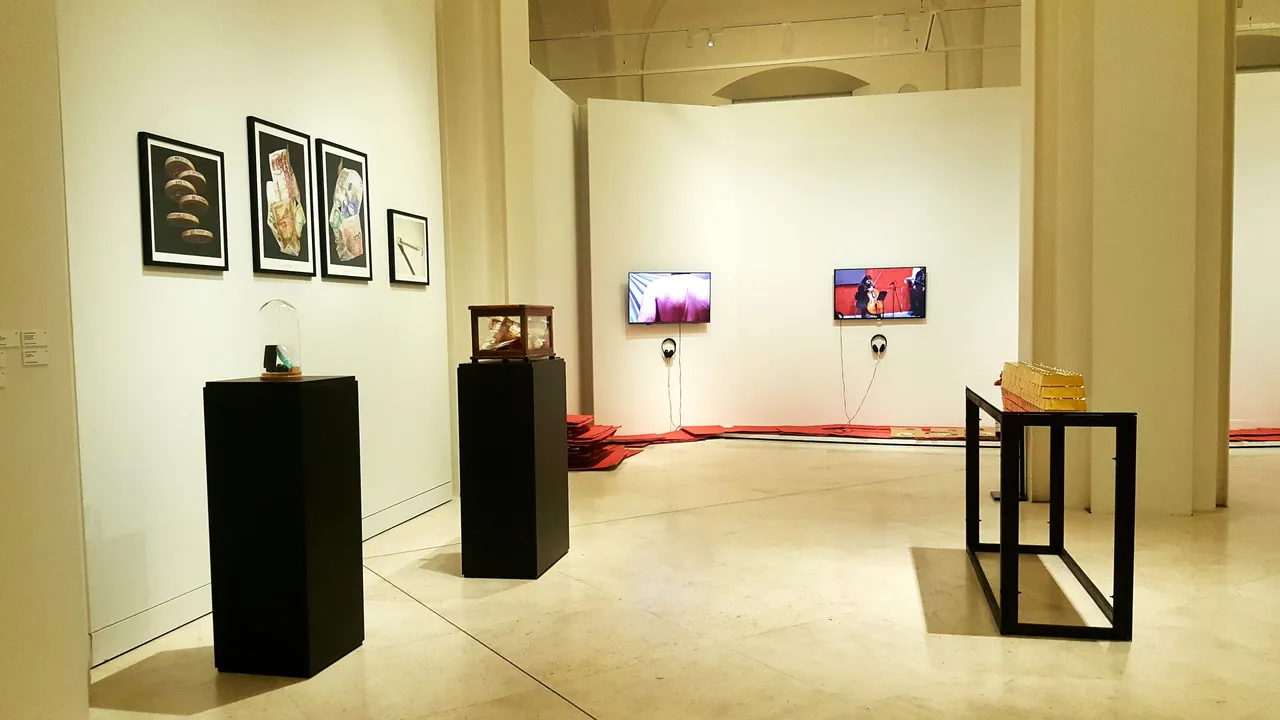

These works led me to a most curious part of the exhibition. There were works in the center, and in the distance I could see screens showing videos. There was much to see, identify, and appreciate.
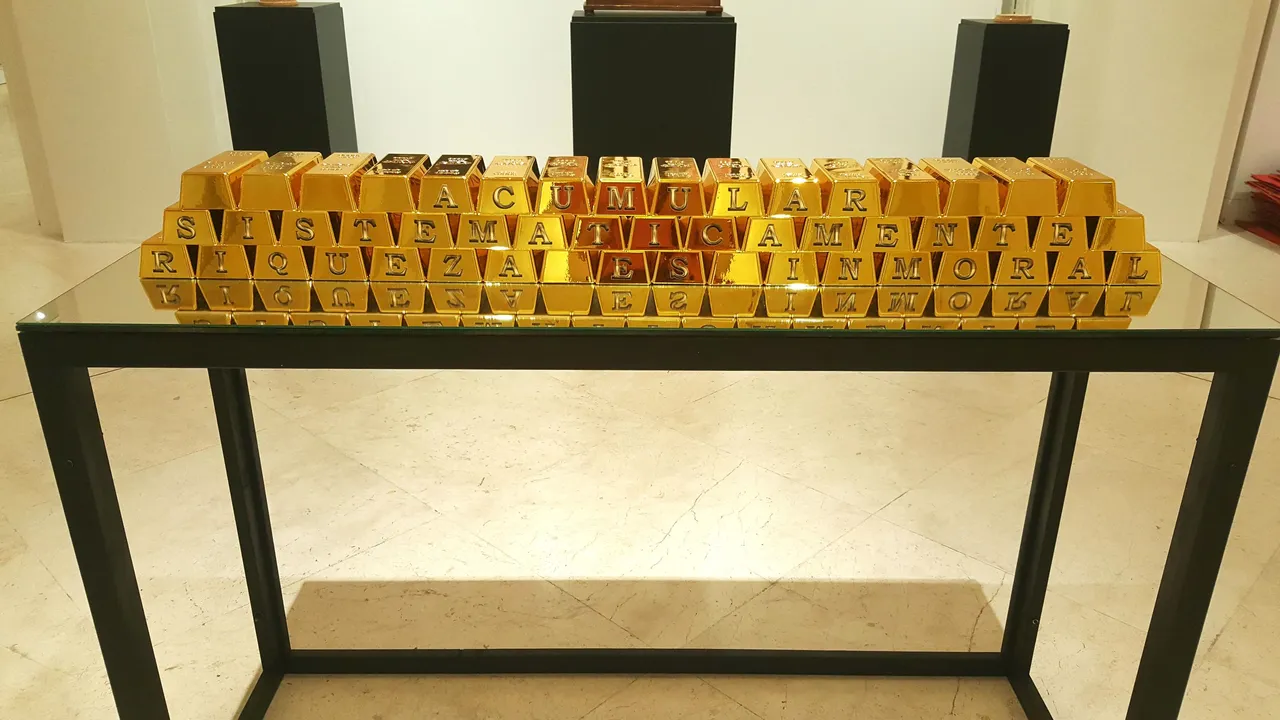
At first, I approached this table containing gold bars with a message: Systematically accumulating wealth is immoral.
Of course, the ingots were fake, made of a base and a mirror, and the artist is Isidro López-Aparicio. It made me think about the accumulation of all the world's wealth by a small minority of the world's population, without regard for the rest. How this distribution actually occurs in practice and how the economic system is set up. There is much to reflect on here.
All the works I show below belong to the same artist and are related to the economic theme. I also leave you with the names of the works, but in themselves they form a whole that speaks to us of accumulation, inflation, deflation, money, and coins.
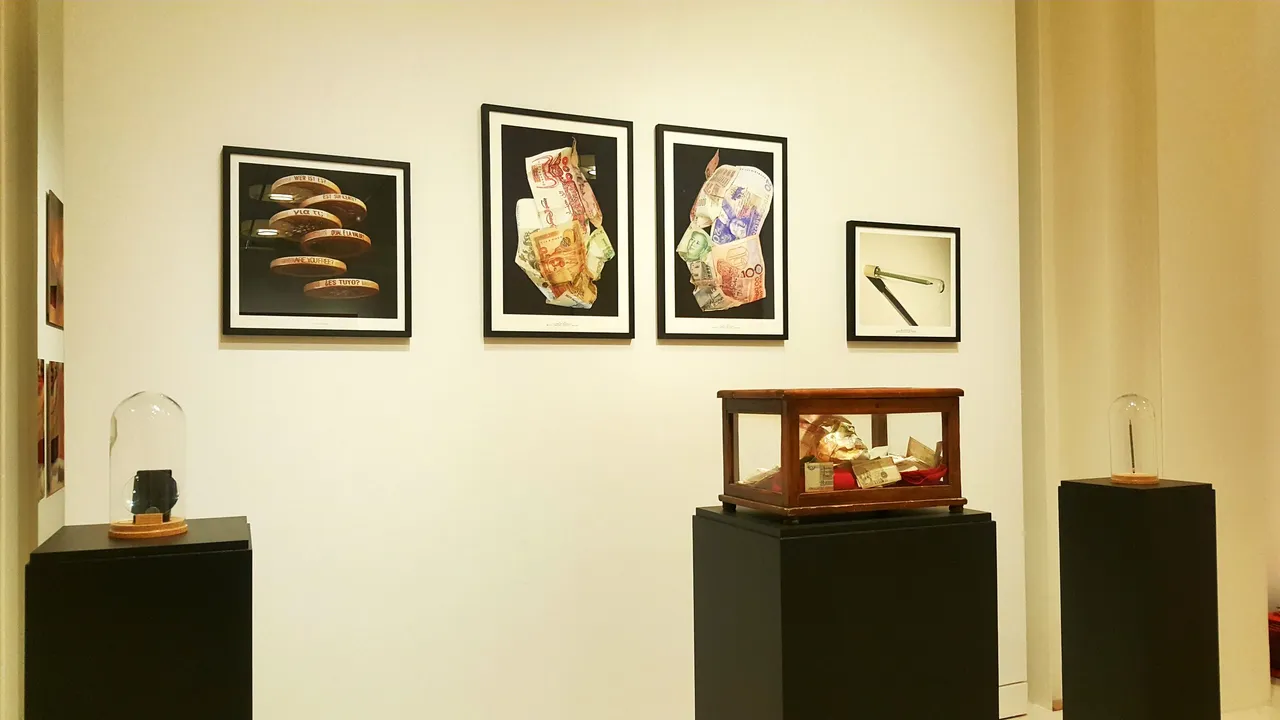
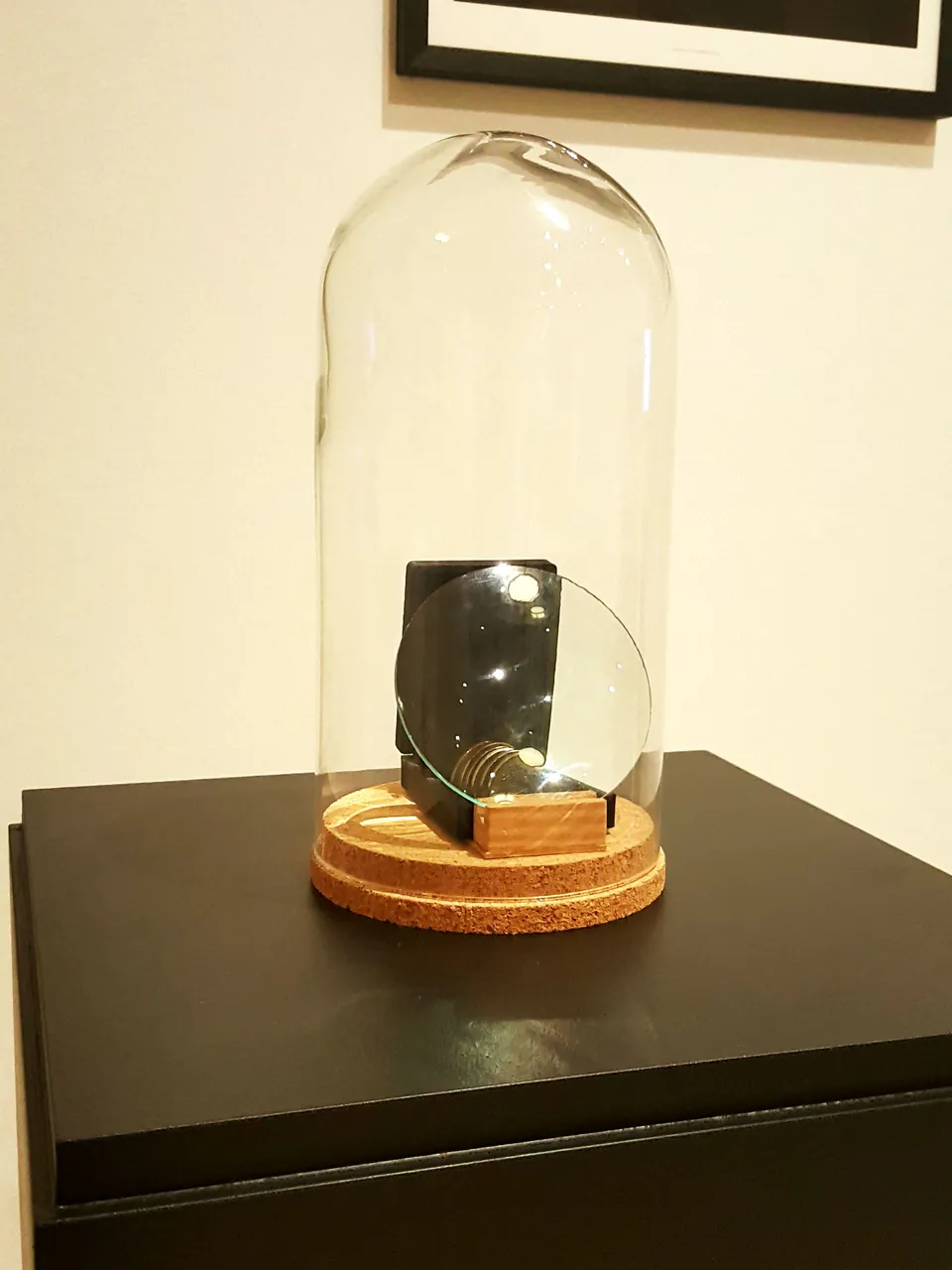 | 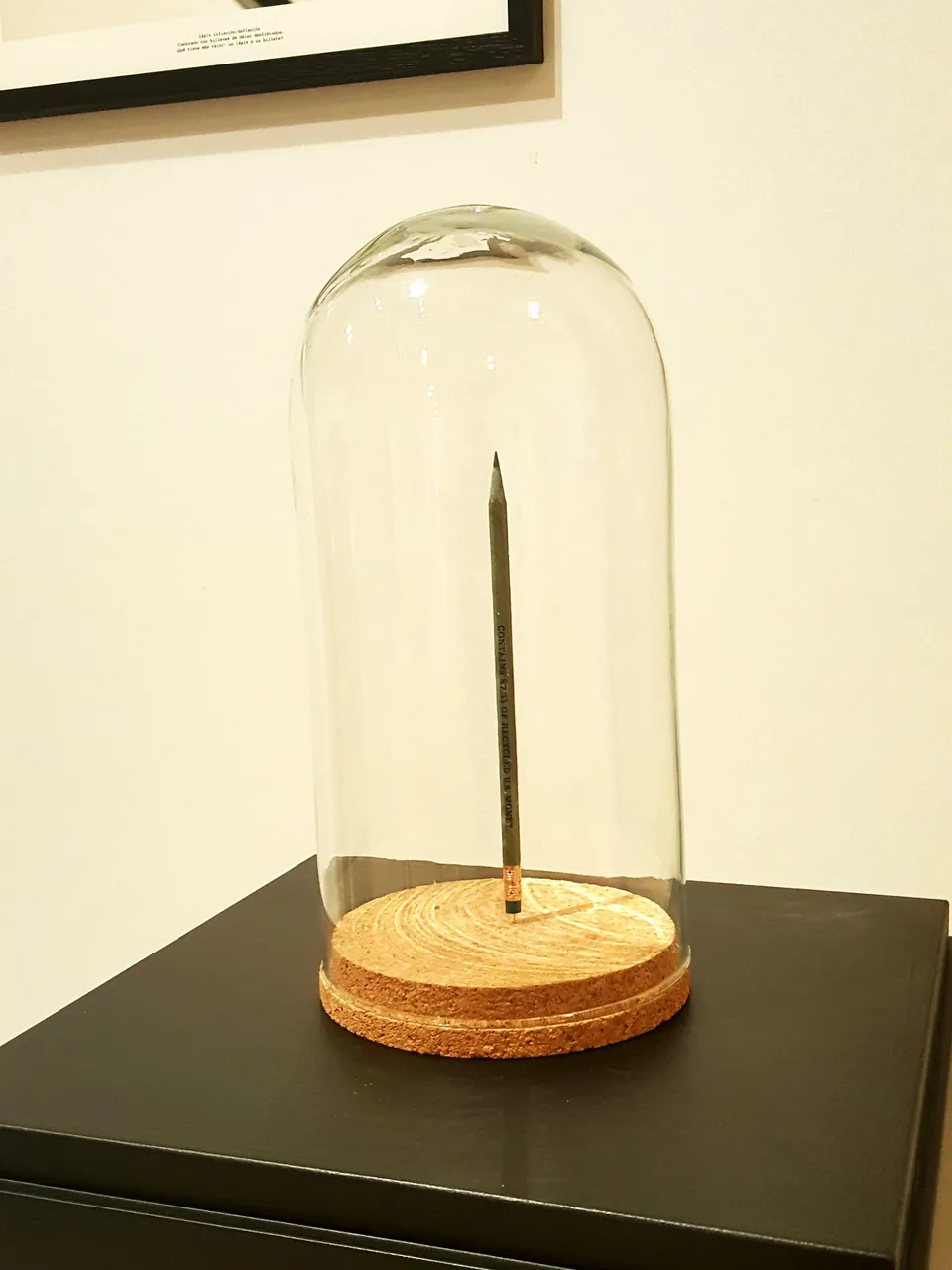 |
|---|
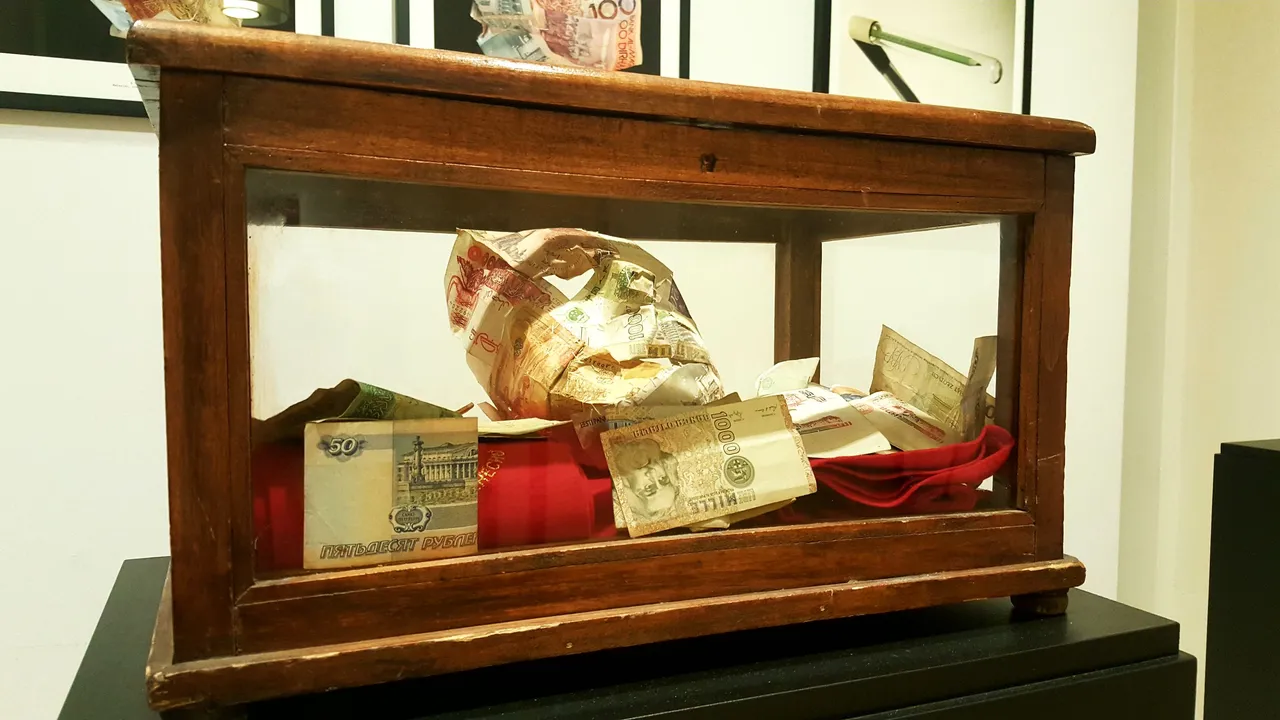
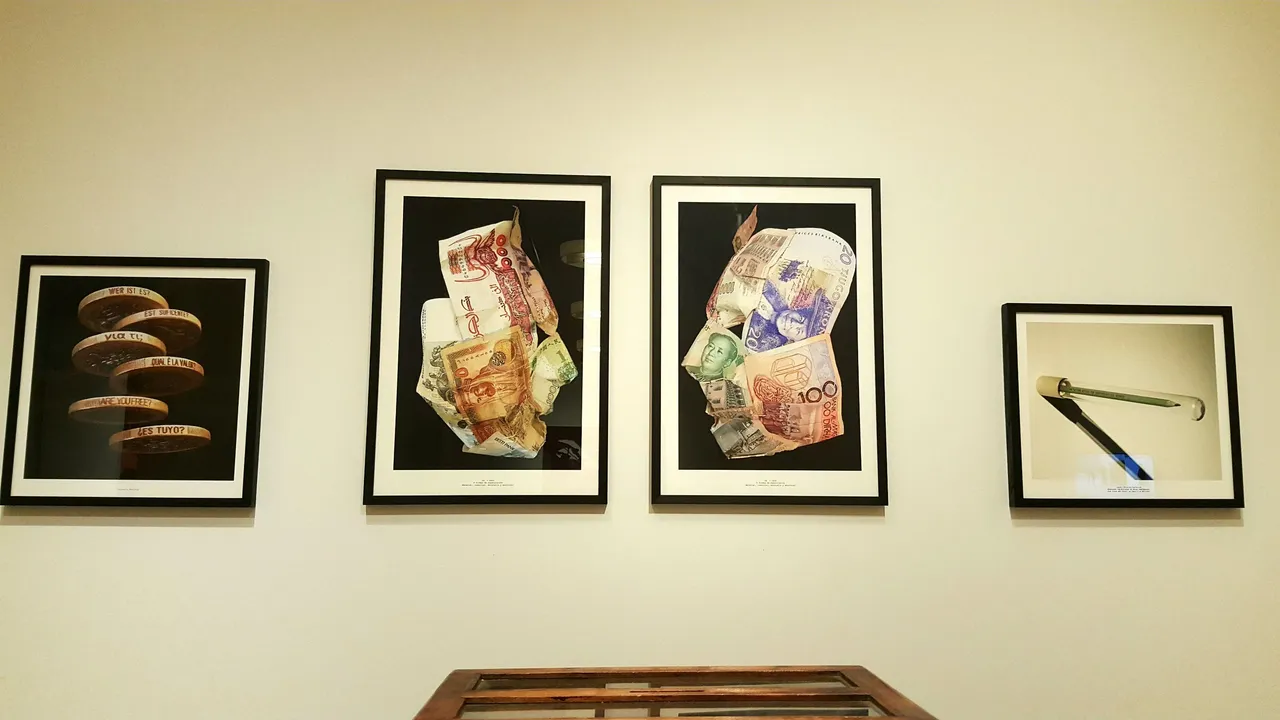
The whole set forms a large composition that invites reflection on many current aspects of the world and a society divided between rich and poor, because in most countries there is no longer a middle class.
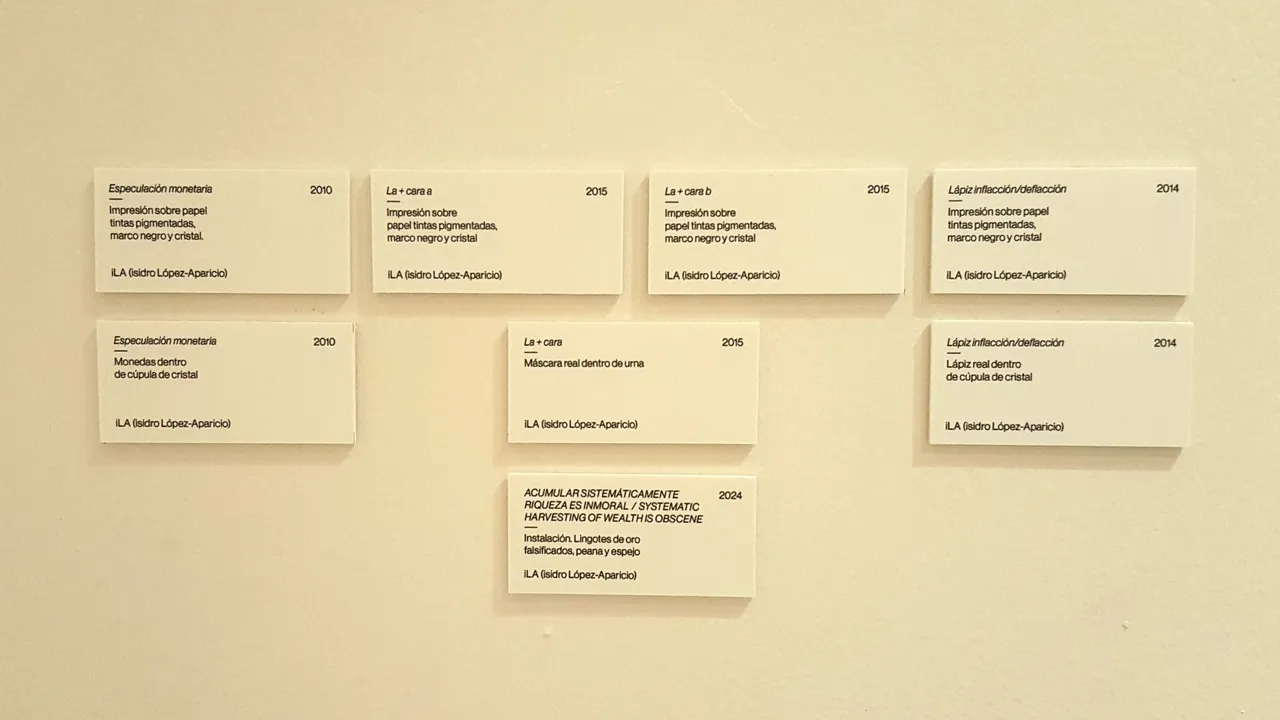
The techniques used by the artist are: printing on paper, pigmented inks, and black frames and glass in the case of the paintings. Two of the works consist of coins and a real pencil inside a glass dome, and a real mask inside an urn in another case. It is different from what I usually see, but the message is interesting.
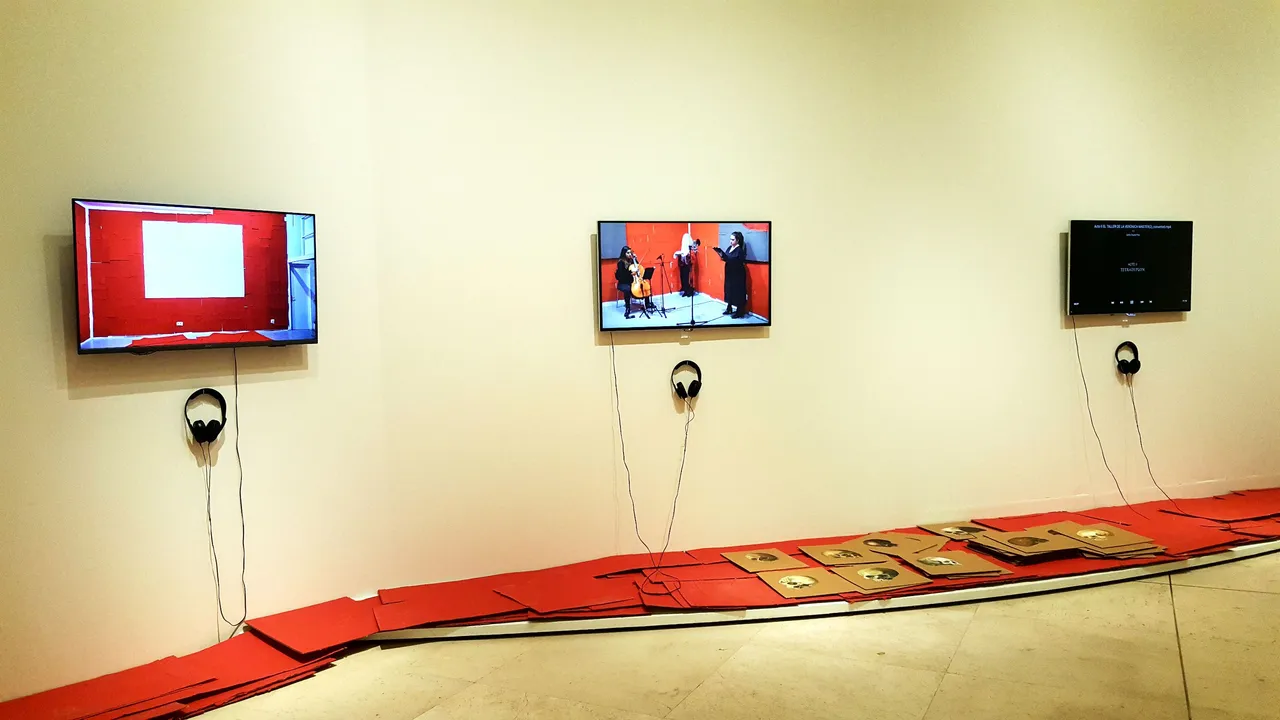
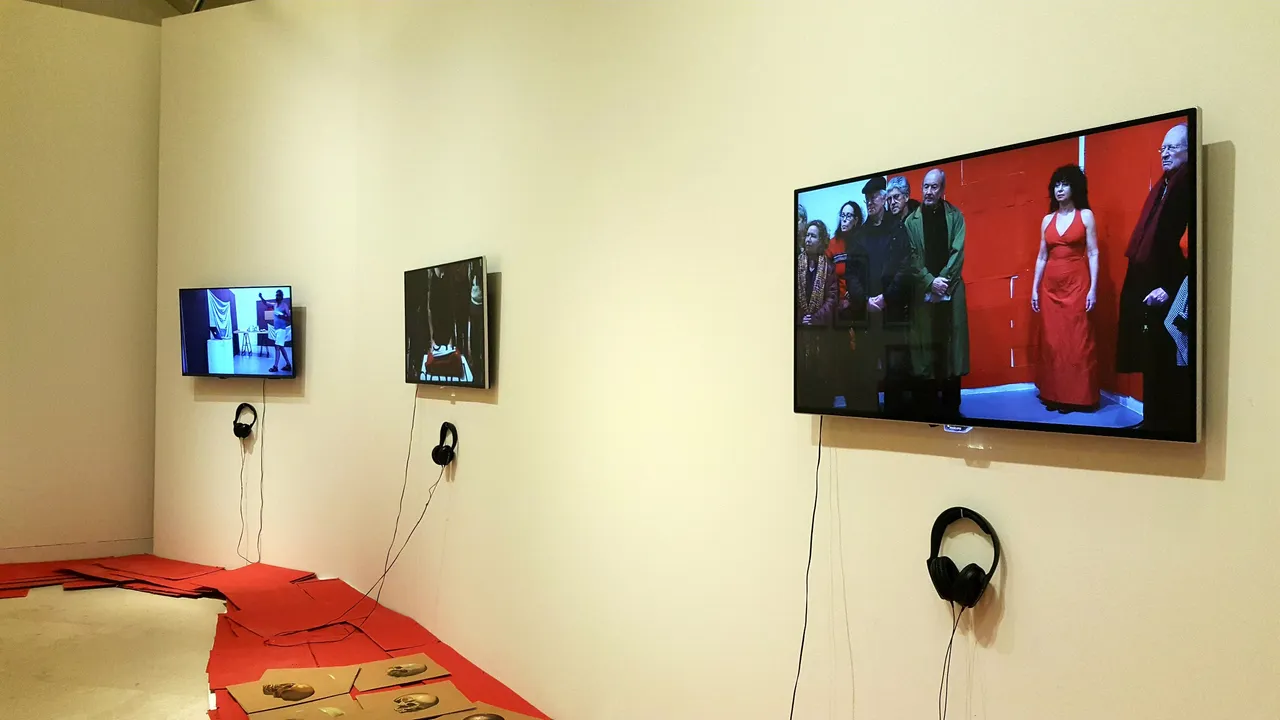
In the next area of the room, there were three screens with videos playing, where you could put on headphones and listen. In general, it is about an art teacher with his students performing and painting. The different screens show the different facets or parts of the entire production.
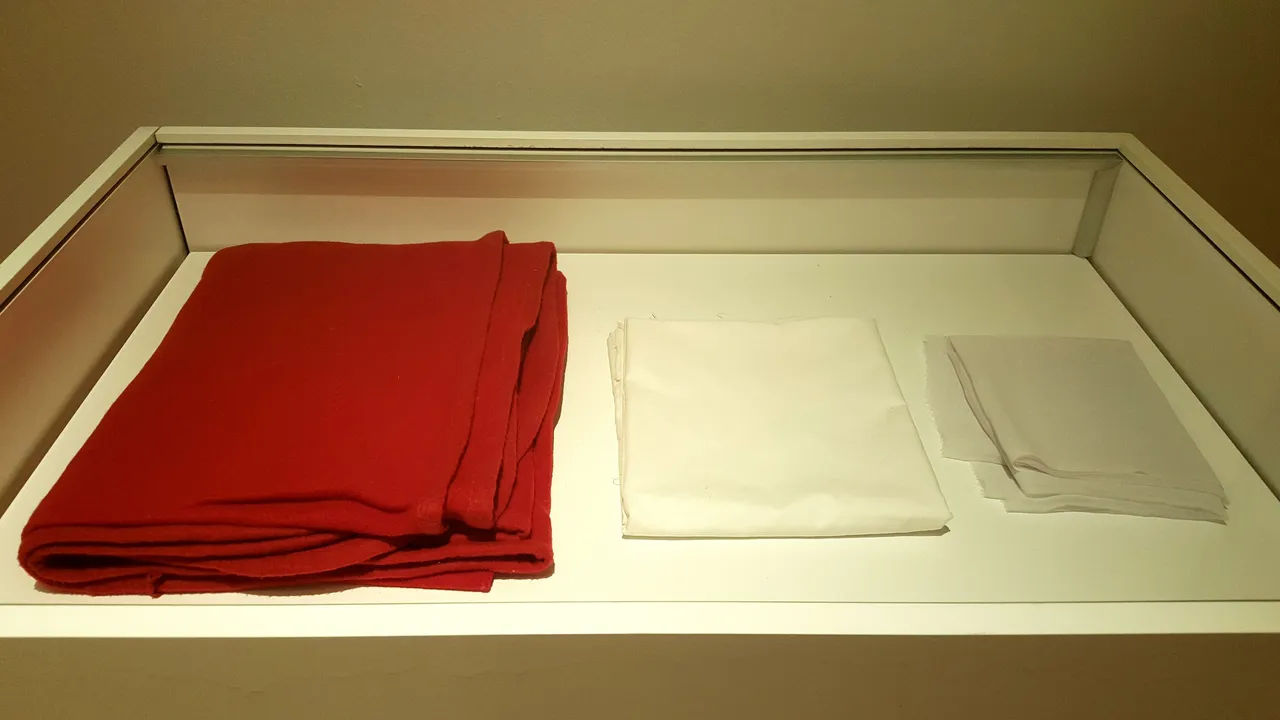
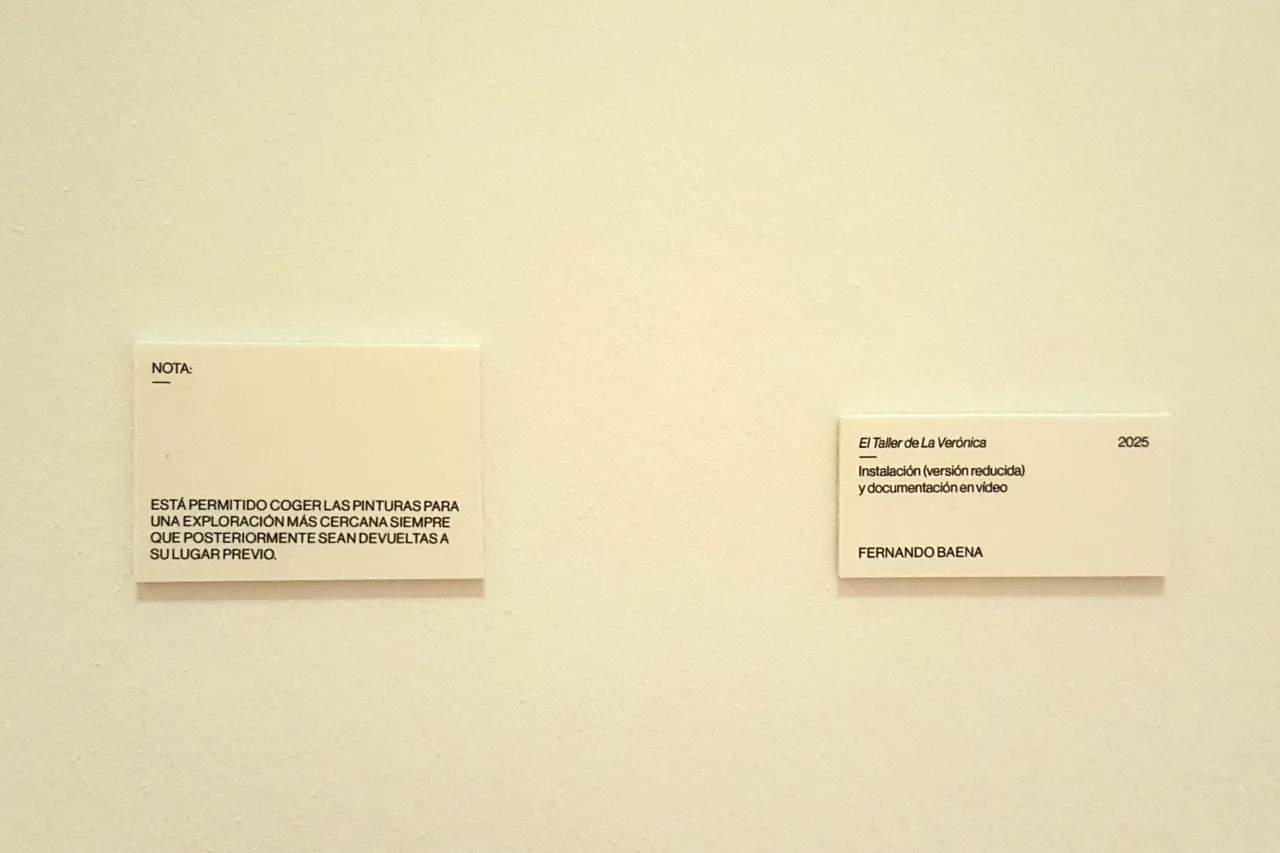
In a display case, there was a sample of some of the materials used. The teacher and artist is Fernando Baena, and the exhibition is called El taller de La Verónica (La Verónica's Workshop).
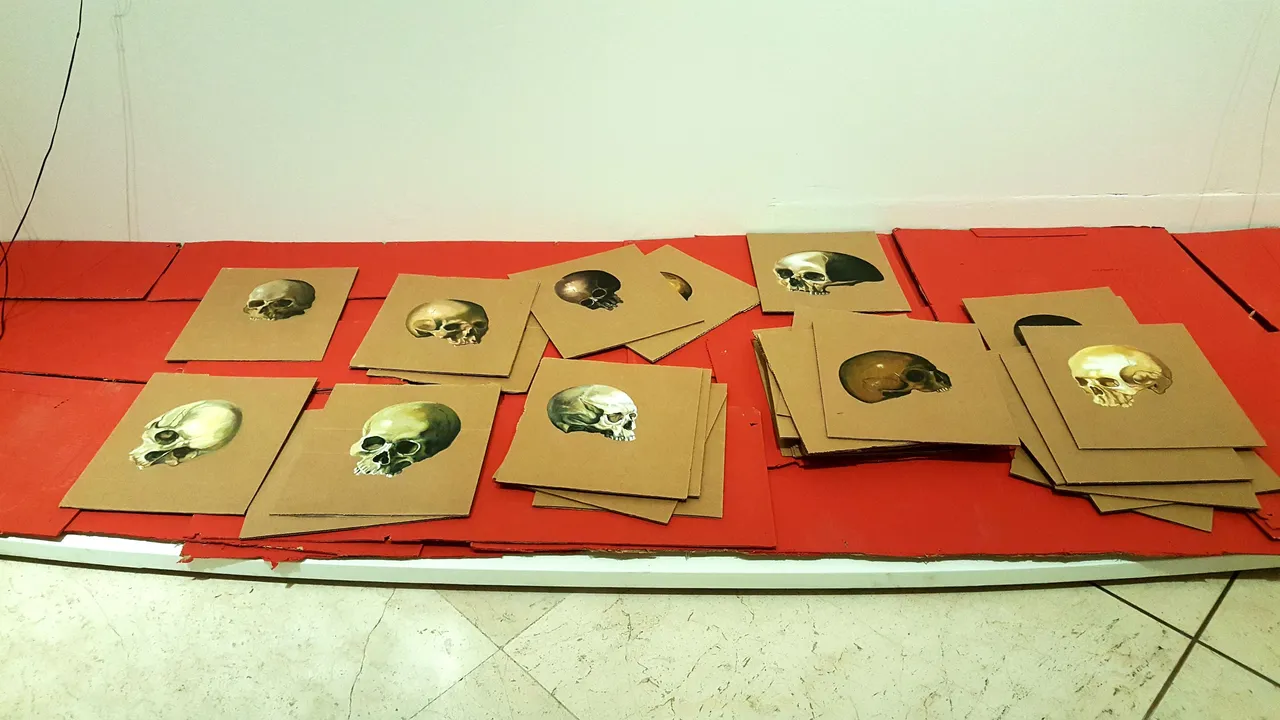
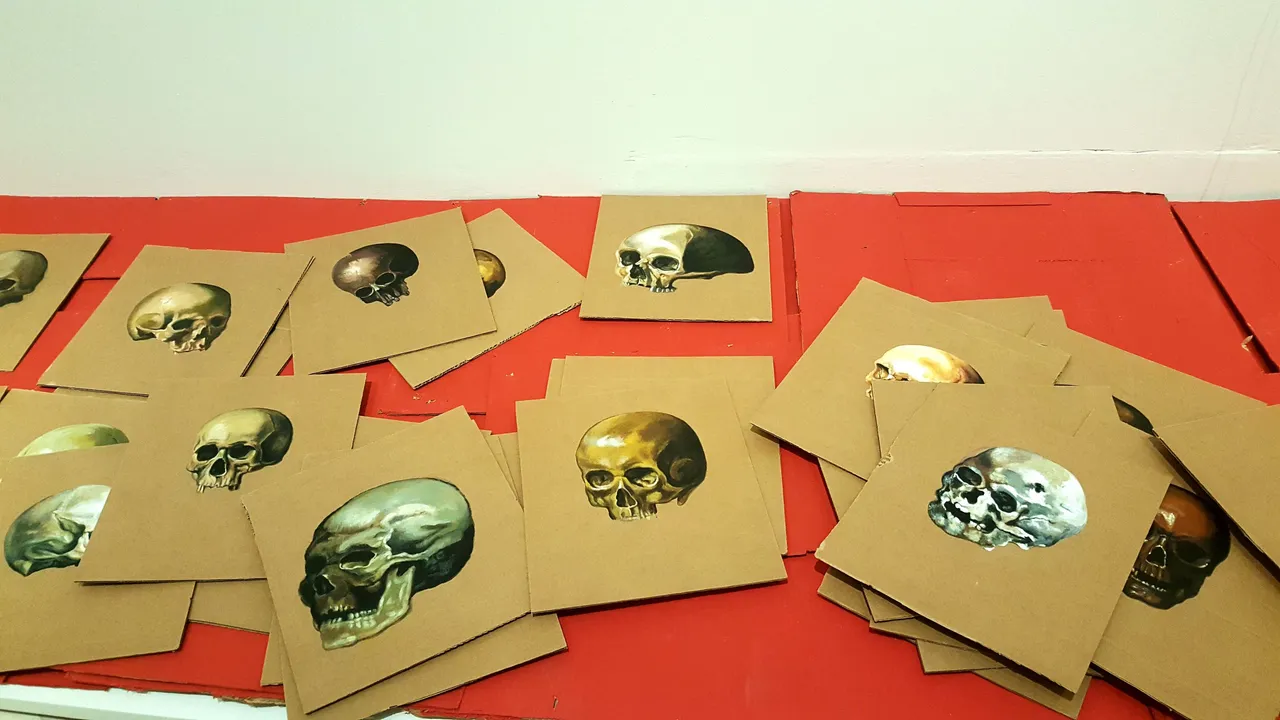
The most interesting thing of all is that each student painted a skull in their own style on cardboard, and a sign next to it said that it was okay to take the paintings to explore them more closely as long as they were returned to their place afterwards. So I took several of them, and although they all seem somewhat similar, you can tell that they were made by different people, all in a different style, but all very well done. I liked this interactive part with the person who goes to see the exhibition.
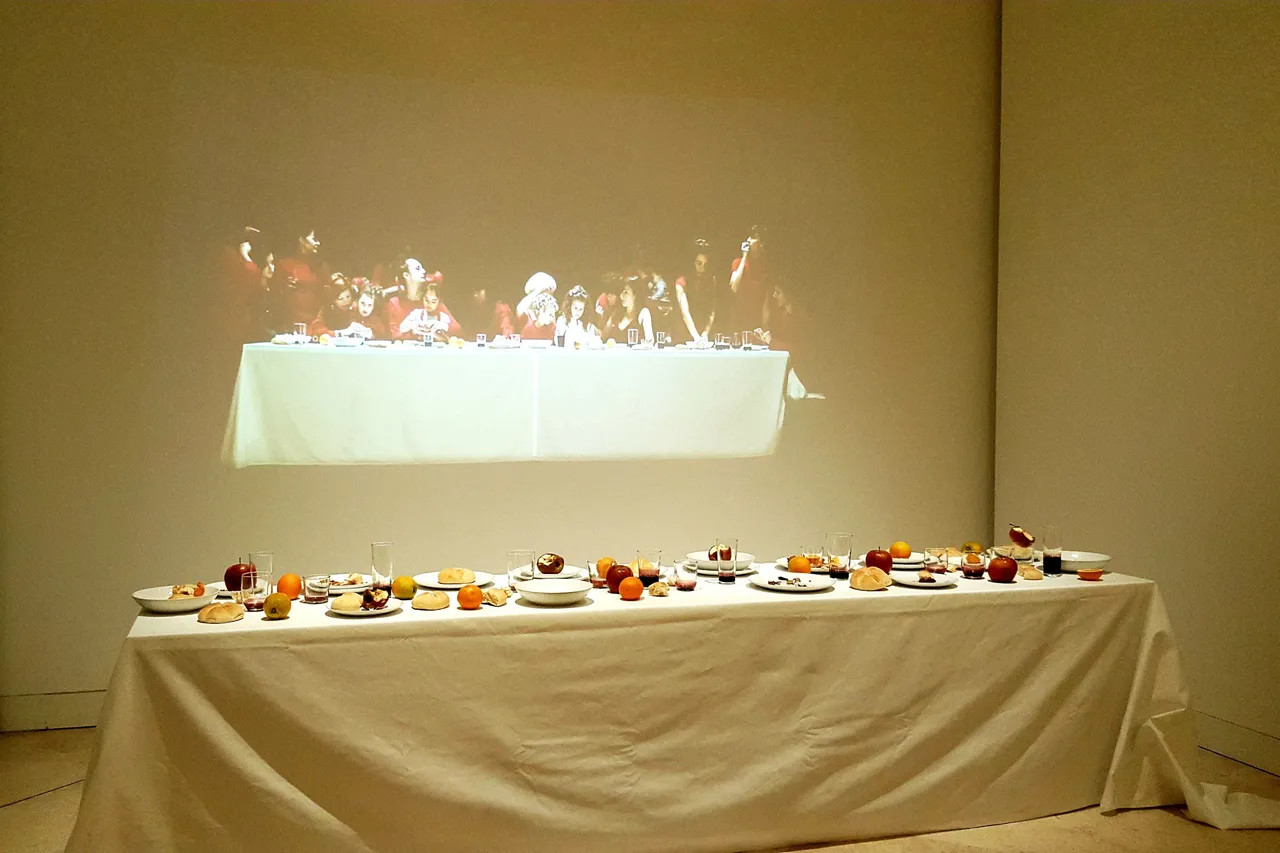
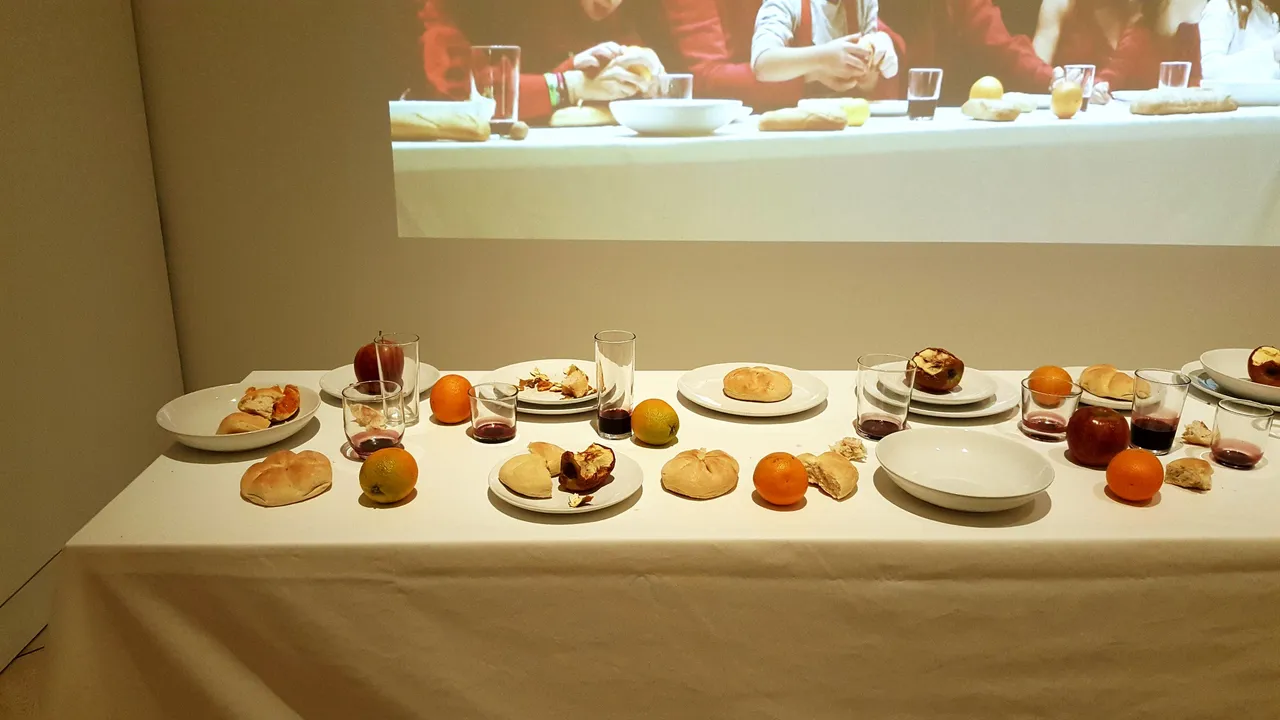

Finally, this room had a corner dedicated to a work by the artist Verónica R. Frías called “The Last Supper,” which consisted of a video installation.
A film was projected of what the last supper would have been like, but where all the protagonists were women, and in front of the film there was a table set with everything that had been used. It is a different version of what one has seen, where the last supper is composed mainly of men.

This room in the exhibition, generally called “With the Heart in Hand,” was fascinating and very entertaining, especially because the guide was with me explaining everything I saw in a very enjoyable conversation, which is important because it brings people closer together and creates a connection between artists and viewers of the works.
Thank you very much for joining me today. I wish you a very good Sunday. See you soon.
Amonet.
All photographs are my own.
